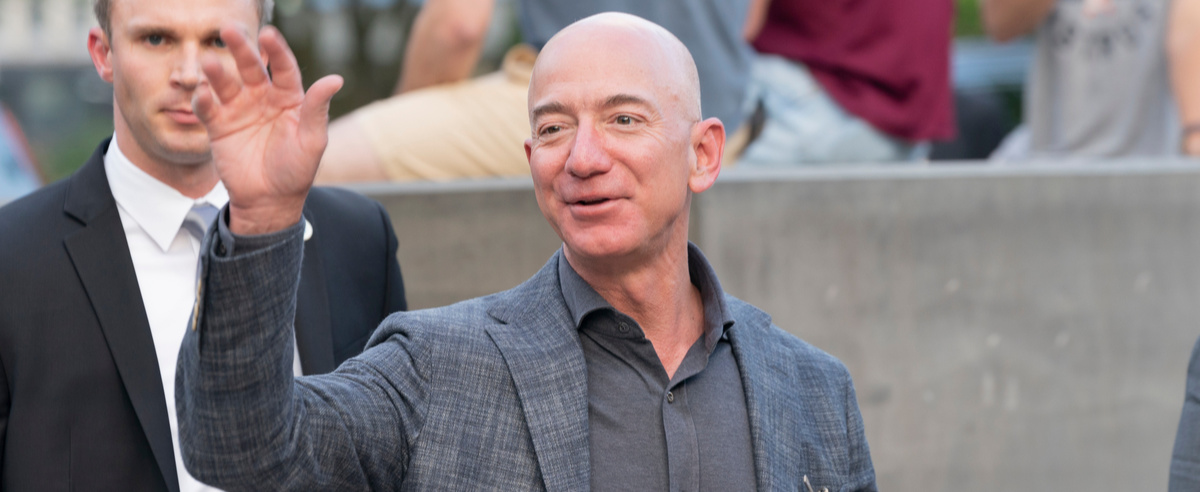The new space race is on, but this time, instead of a PR challenge among competing governments and clashing ideologies, it’s a pissing contest among billionaire entrepreneurs…with phallic imagery to match. Or so it seems.
The national press has chronicled the space flights with live saturation coverage so far. Maybe it’s a welcome break from political squabbling and divisive COVID-19 stories, but the fawning by broadcast media is almost embarrassing. Yet I admit to following the billionaire space race, if only to observe the comms strategies behind each brand. Who’s coming out on top?
Branson takes the early lead
Among the contenders, PR stuntmeister Richard Branson was first to launch into space on July 11 — at least figuratively. Technically, Branson’s Virgin Galactic fell short, because it never made it past the internationally recognized space border known as the Kármán line. But Branson wins points for being clearest when it comes to messaging. His goal is to launch space tourism as a global industry, period. It’s one more commercial enterprise for him and Virgin, so there’s been minimal posturing about saving the planet or promoting scientific breakthroughs. He also deserves credit for skillful and compassionate handling of the fatal crash and death of a test pilot 7 years ago. The tragedy could well have killed his space ambitions.
Yet despite his first-mover advantage, I found Branson’s optics a little lacking. I’m old enough to remember the glory days of the NASA program, with its thrilling rocket launches and cinematic splashdowns, so a choppy video of zero-G inside a plane felt a bit like a bad Zoom. Branson nearly made up for the lack of visuals with the swashbuckling enthusiasm he brings to everything he does, however. He’s his own best brand spokesperson, and he always delivers. It’s hard not to admire it, mostly because it feels real, and that makes it infectious.
Bezos delivers on optics
Yesterday Jeff Bezos’s Blue Origin took its turn. Here, the visuals were much stronger, and the storyline was an updated version of the space programs of yore. It wasn’t subtle. The rocket system is boldly dubbed New Shepard, after the Mercury astronaut, and its maiden voyage crew included something for everyone, PR-wise. There were plenty of sidebars! Bezos himself was the star, along with his brother, which tugged at the boyhood-dream heartstrings. Then there was the 82-year-old woman who was denied a place in the U.S. space program of the 60s, making the flight a deferred dream and her the oldest person in space. Rounding things out for Gen-Zers, there was a Dutch teenager who qualified as the youngest space traveler to date. Great stuff.
The New Shepard spacecraft itself was tricked out with comfy and luxurious reclining seats and massive windows to better gawk at the view of Earth from the edge of space. Most importantly, we watched a real NASA-style liftoff (which also launched a thousand penis jokes on Twitter). The payoff was the capsule’s graceful glide down to a Texas desert landing as it was held aloft by parachutes. It was beautiful stagecraft.
The media trumps the message
For me, however, Blue Origin’s messaging was more muddled than Branson’s. Bezos started with vague comments about important discoveries that space travel might bring, followed by hollow statements about making it “accessible” to everyone. (This, after an anonymous billionaire paid $28 million at an auction for the privilege but didn’t show up due to a “scheduling conflict.”) After the flight, he rambled giddily about the population potential of the solar system, explaining that if we had “a trillion humans, we would have a thousand Einsteins and a thousand Mozarts and unlimited, for all practical purposes, resources and solar power.” Come again?
Meanwhile, the Blue Origin video about the flight was a stilted, lengthy, and overproduced chore. On the positive side, Blue Origin claims the funds raised from the auction will support a nonprofit called Club for the Future that supports STEM careers for kids. The Club for the Future website focuses on future space travel, so it’s unclear if there’s a commitment to other STEM studies.
More memorably, Bezos himself capped things off with a bizarre cowboy hat and a tone-deaf thank-you that backfired. In a post-launch presser, he exulted, “I want to thank every Amazon employee, and every Amazon customer, because you guys paid for all this.” It served only to dredge up stories about harsh working conditions at Amazon and highlighted the contrast between Bezos’s status and that of the average Amazon worker.
So, who’s the winner? So far, I’d say it’s a draw. But the good (or bad) news is that the PR space race is far from over. It will fuel countless stories as we all stay tuned to see what kind of spectacle Elon Musk will dream up for later this year. But Musk’s SpaceX is already functioning as a government contractor, hauling NASA astronauts and cargo to the International Space Station, deploying satellites to enable internet, and setting its sights on a mission to Mars. Its role in the bigger picture is clear.
In search of our mission
There are a thousand reasons to be cynical about the new space race. It’s staggeringly expensive, and the funds aren’t limited to private investment; taxpayer dollars are involved, too. Many note that the money devoted to space tourism could be better invested in solutions to pressing problems here on earth. If you look at it literally, a handful of superrich white guys have spent millions on joyrides that accomplish a fraction of what our government did decades ago. But there’s potential for so much more.
Above all, the new space travel contest is in search of a mission. If the mission is simply to popularize and privatize space travel, that’s great. Watching the birth of a new industry is exciting, and it comes with lots of benefits, like jobs, investment, and the potential for new discoveries. But I can’t help but think the whole thing cries out for a higher-order benefit, or at least a unifying principle that binds us together when we need it most. I’ve always thought of John F. Kennedy’s moonshot speech as a classic example of thought leadership. In that case, the young president’s words were designed to inspire business and technical innovation, a popular interest in science, and a sense of being all in it together.
The billionaires and their PR storytellers have taken pains to appeal to different audience segments. The messaging is polished, but it’s hollow and self-serving. They offer an entertaining spectacle, a slick press outreach, and high production values, but the mission is anything but inclusive. As Talia Lavin writes of the latest space flights, “While the rich sail to the stars the rest of us are left to toil in gravity’s bounds.”





